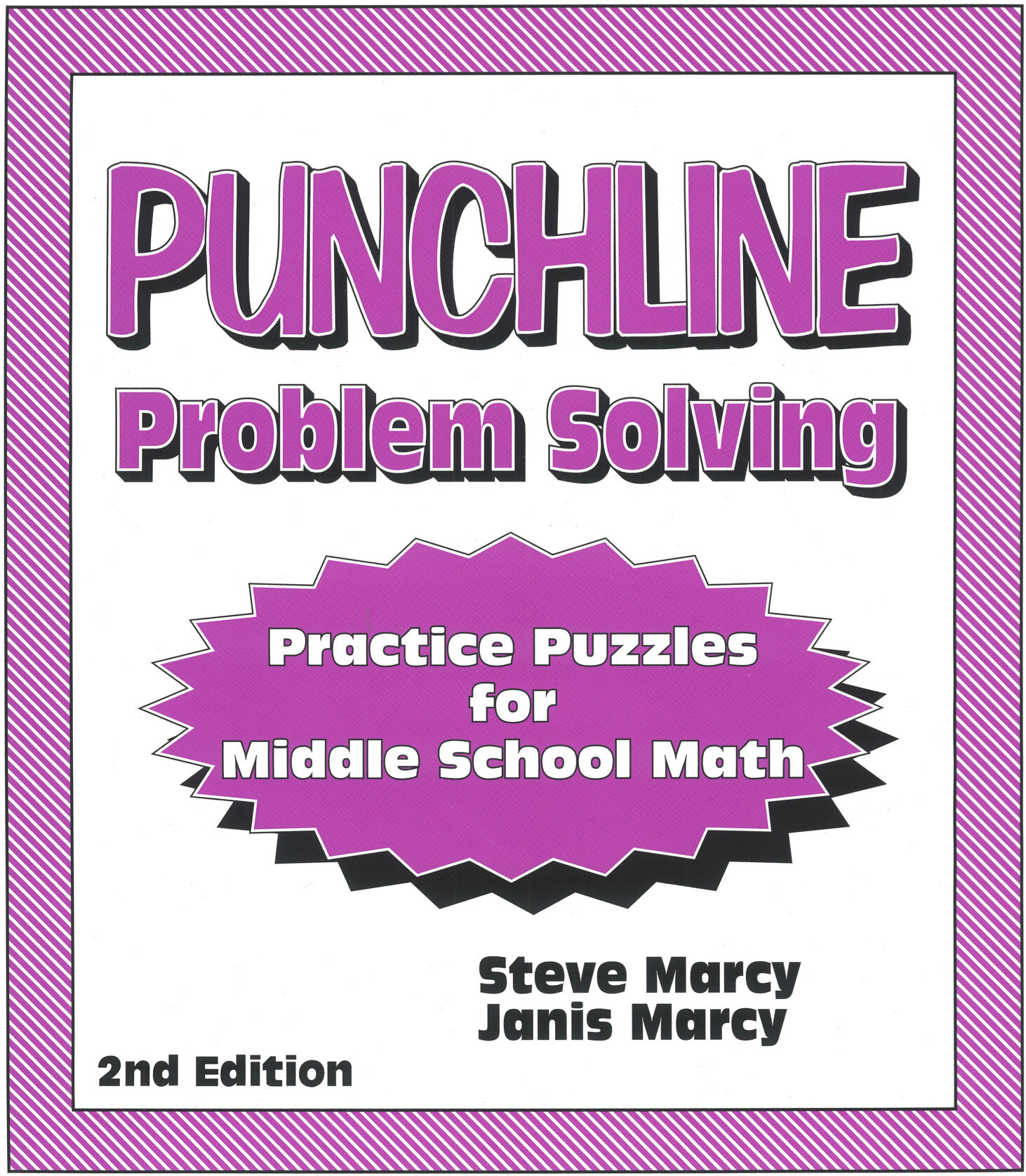Punchline Problem Solving
Math teachers struggle to help students build problem-solving power. Students need a meaningful understanding of basic concepts, concepts like: multiplication, division, decimal, fraction, variable, probability, area, volume, variable, equation, percent, ratio, and many others. They also need to learn strategies and procedures for applying these concepts. It might be said that each student needs a tool box full of mathematical ideas, so that when confronted with a problem, (s)he can reach in and find the right tool, a relevant concept or appropriate strategy. We are trying to help every student build a richer tool box!
One way to do this is to provide effective practice in the application of concepts, strategies, and procedures. Students must be challenged again and again to use mathematical ideas. We want students to use them in investigations, open-ended questions, creative projects, and nonroutine problems. But success with such tasks often requires time spent on more structured practice, working with exercises carefully designed to teach specific ideas. Students construct meaning as they work through them, and retention is enhanced. Certain features are designed into Punchline puzzles to make this practice more effective.
KNOWLEDGE OF RESULTS. Students appreciate feedback and confirmation when they work, especially when learning new skills. Built into these puzzles are various devices to give the student immediate feedback as exercises are completed. For example, if an answer is not in the scrambled answer list or code, the student knows it is incorrect. S/he can try again or ask for help. Teachers are able to spend more time helping students who need help and less time confirming correct answers. Students work with greater confidence.
MOTIVATING GOALS FOR STUDENTS. When Do Super Heroes Use Decimals? Each puzzle title is an engaging riddle. Students construct the punchline in the process of checking their answers. The humor acts as an incentive, because the students are not rewarded with the punchline until they complete the exercises. While students may wonder aloud who thinks of such dumb jokes, they secretly enjoy them and look forward to solving the puzzles. The humor has a positive effect on class morale. In addition, discovering the punchline gives the student a satisfying sense of closure and success. Incidentally, “in a tenths situation.”
OPPORTUNITIES FOR COOPERATIVE LEARNING. For most topics in this book, there is a set of puzzles for cooperative groups of 2 or 4 students. Each student does essentially the same exercise but with different numbers. The process is the same but the answers are different. Each student gets part of the punchline, so that all parts are required for a complete solution. Students are encouraged to help each other, since both use the same solution processes, but not copy each other, since the numbers are different. There is interdependence combined with individual accountability, the twin hallmarks of effective cooperative learning. Together they produce an additional source of student motivation.
Punchline Problem Solving includes puzzles for many topics in today’s middle school math programs. They are organized into 14 sections that correspond to chapters in many textbooks. Twenty-two of the puzzles are for cooperative groups of either 2 or 4 students. Each puzzle is designed for a specific topic listed in the table of contents and on the puzzle itself. Many puzzles provide space for student work. And, hopefully, their self-correcting feature will lighten the burden of correcting assignments. Please check out some sample puzzles to see if they would work for you.

